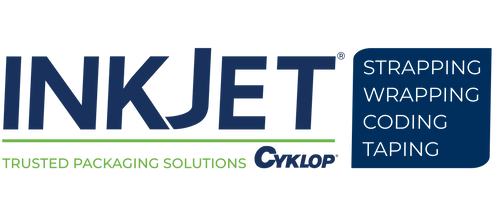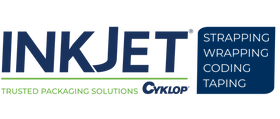Printer Integration on Production Lines: What You Should Know
Production line product coding is an essential part of countless manufacturing and packaging workflows. Across industries, companies are required to mark their products with various codes to:
- Satisfy industry-specific regulations
- Comply with distribution network policies
- Aid product traceability
- Improve inventory management across the supply chain
- More accurately perform quality assurance processes
These codes vary according to product type, local/state regulations, and differing distribution network policies, among other factors. Most commonly, product codes take the form of:
- Lot codes
- Barcodes
- QR codes
- Date codes
- Serial numbers
- Batch numbers
If these markings are misprinted or absent, it can lead to fines, product recalls, and other expensive consequences from distribution partners and government regulators.
For mid-to-large scale companies that package substantial product quantities, a reliable product coding workflow is essential to maintaining an efficient and profitable operation. That’s why companies in food packaging, beverage bottling/canning, chemical packaging, pharmaceutical production, and similar fields place industrial printers on their conveyor-driven production lines. Continuous inkjet and thermal inkjet printers provide line operators with the speed and accuracy required to mark thousands of products a day with highly legible, long-lasting markings.
However, for any printer system to work well, it must be properly installed and integrated into the larger data system. Below, we explore the topic of printer integration on production lines to show you how to make the most efficient workflow possible.
Printer Installation Best Practices
Before we delve into the larger integration process, it’s important to review some installation best practices. After all, printer integration on production lines is only possible once the coding system is installed.
When installing a printer, the first thing you need to do is create the necessary line space to place the unit and aim the printhead toward the passing substrates. Thermal inkjet printers like the Anser X1, Anser A1, and Anser U2 Pro-S are compact machines that do not require much space. Continuous inkjet printers like the DuraCode Pigment and DuraCode Touchscreen are significantly larger, heavier, and require more room.
As you look for a suitable location, remember that your printer must be:
- Readily accessible to line workers
- Stable enough to remain immobile during operation (unintended movement can ruin code appearance)
- Set at the proper angle and distance from the substrate
- Located in a safe spot, away from any potentially dangerous machinery
If your line experiences speed fluctuations, you should install an encoder as well so the printer can adjust its marking mechanics to consistently create clear codes.
For more installation information, read our blog on the topic, “Coding and Marking Printer Setup: Installing a Printer to Meet Your Application Needs.”
Essential Considerations for Printer Integration
After you have installed your printer, you can begin the integration process.
Printer integration aims to connect your coding system to your data network/computer system. This interconnectivity boosts operational efficiency by:
- Automating the printing process
- Enabling remote printer access and job creation
- Centralized control which minimizes the risk of human error
With an integrated system, you can access different data sources through a single centralized interface. If a new task must be created or an existing code/label needs to be updated, integration enables you to instantly make enterprise-wide alterations, saving you time and broadening your level of control.
Whether you are using a continuous inkjet printer, thermal inkjet printer, laser system, or high-resolution case coder, modern technology makes integration simple. Today’s systems are often built with multiple communication protocols to accommodate different situations. The Anser X1, for example, is compatible with:
- TCP/IP (Transmission Control Protocol/Internet Protocol)
- UDP (User Datagram Protocol)
- Modbus TCP
- Anser U2 Net protocol
When performing printer integration on production lines, you need to consider these three important factors:
- Language: Your printer must be able to communicate with your PLC. Before purchasing a printer model, make sure that it has the appropriate communication protocol to operate within your network.
- Connection: As with communication protocols, your printer must have the right I/O ports to connect with other machines. If your printer model does not have the appropriate ports, an adaptor can likely fix the issue.
- Voltage: In many cases, certain currents are used by machines to communicate with one another. If you are running a 12-volt system and have a 24-volt printer, it can cause significant issues.
If you are searching for a new printing system, we highly suggest working with your IT team or product manager to select a printer that fits your needs. If you have additional questions, the team here at InkJet, Inc. is also available to answer your questions and help you find the optimal printer for your network.
Have Questions about Printer Integration on Production Lines? InkJet, Inc. Has Answers
A properly installed marking system is key to any product coding application. By following installation best practices, you can position your system in the perfect location to consistently create high-quality codes.
After installation, integration takes your coding process to the next level. It enables your coding machine to communicate with your larger intelligence system, allowing you to:
- Remotely control the system
- Quickly assign tasks to the machine
- Automate the label creation process
- More accurately perform quality assurance tasks
If you are looking to get the most out of your system, the InkJet, Inc. team can help integrate it into your larger data network. Whether you are using an inkjet printer, hi-res case coder, laser system, or print-and-apply labeler, our team will help you connect it to your other systems for peak efficiency. Contact us today to learn more.
For more information about printer integration on production lines, contact InkJet, Inc. online or call 1(800) 280-3245.



